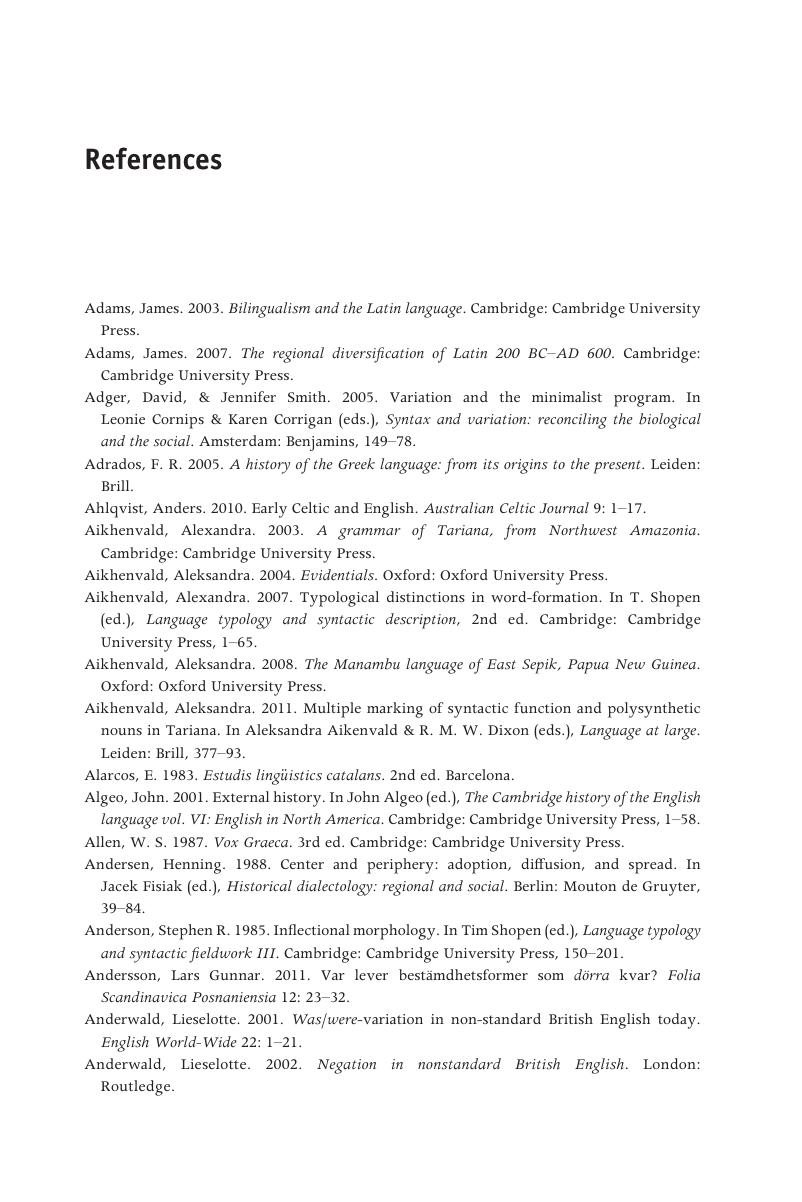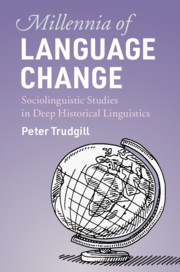Book contents
- Millennia of Language Change
- Millennia of Language Change
- Copyright page
- Dedication
- Contents
- Acknowledgements
- Prologue: the Long View
- 1 Prehistoric Sociolinguistics and the Uniformitarian Hypothesis: What Were Stone-Age Languages Like?
- 2 From Ancient Greek to Comanche: on Many Millennia of Complexification
- 3 First-Millennium England: a Tale of Two Copulas
- 4 The First Three Thousand Years: Contact in Prehistoric and Early Historic English
- 5 Verner’s Law, Germanic Dialects and the English Dialect ‘Default Singulars’
- 6 Deep into the Pacific: the Austronesian Migrations and the Linguistic Consequences of Isolation
- 7 The Hellenistic Koiné 320 bc to 550 ad and Its Medieval and Early Modern Congeners
- 8 Indo-European Feminines: Contact, Diffusion and Gender Loss around the North Sea
- Sources
- References
- Index
- References
References
Published online by Cambridge University Press: 25 March 2020
- Millennia of Language Change
- Millennia of Language Change
- Copyright page
- Dedication
- Contents
- Acknowledgements
- Prologue: the Long View
- 1 Prehistoric Sociolinguistics and the Uniformitarian Hypothesis: What Were Stone-Age Languages Like?
- 2 From Ancient Greek to Comanche: on Many Millennia of Complexification
- 3 First-Millennium England: a Tale of Two Copulas
- 4 The First Three Thousand Years: Contact in Prehistoric and Early Historic English
- 5 Verner’s Law, Germanic Dialects and the English Dialect ‘Default Singulars’
- 6 Deep into the Pacific: the Austronesian Migrations and the Linguistic Consequences of Isolation
- 7 The Hellenistic Koiné 320 bc to 550 ad and Its Medieval and Early Modern Congeners
- 8 Indo-European Feminines: Contact, Diffusion and Gender Loss around the North Sea
- Sources
- References
- Index
- References
Summary

- Type
- Chapter
- Information
- Millennia of Language ChangeSociolinguistic Studies in Deep Historical Linguistics, pp. 130 - 151Publisher: Cambridge University PressPrint publication year: 2020



